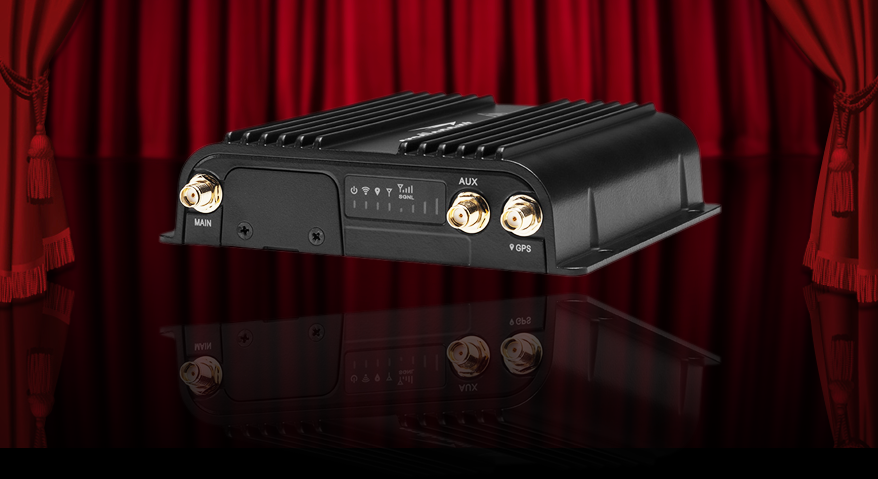
The Cradlepoint IBR900-600 is a ruggedized, wireless 4G LTE router that we’ll be giving the once-over today. This little powerful little Cradlepoint features an integrated LTE-Advanced Category 6 cellular modem, 802.11ac Wi-Fi, two gigabit ethernet ports, and a USB port for tethering. This is a pretty cool feature that not all competitors have. And, being an LTE Advanced device, it can communicate on two bands at once. Theoretically, with peak speeds of up to 300 Mbps.
What is a router, exactly?
Basically, a router does one simple thing – connect two or more devices to the same network. It can be used for mainline or back-up connectivity. A basic home router can simply inter-connect the devices within your home or office and nothing else. For instance, if you want to print a photo from your smartphone to your home printer, all you have to do is connect the two devices to the router’s wireless hotspot.
Now, since your home router is using WiFi, it doesn’t need internet to do these things. Therefore your router doesn’t need to have a simcard to pick internet from your mobile network of choice.
But the Cradlepoint IBR900 is more than just a home router, right?
Yes. For starters, LTE routers like the IBR900 contain a built-in LTE broadband modem. Plus, they enable local Wi-Fi and/or Ethernet devices to share the LTE connection.
They can also have some additional features such as firewall, layer 7 filters, DHCP server, advanced QoS. What’s more, The IBR900 can support up to 128 connected devices.
Performance of the IBR900
The IBR900’s WAN Connectivity is 4G Cat 6, and LAN Connectivity is Wi-Fi 4. It’s embedded Category 11 LTE modem offers 600 Mbps download speeds, and 75 Mbps upload speeds. It has 802.11ac Wi-Fi, as well as LTE-Advanced Carrier Aggregation of 2x 20MHz. Plus, it offers 2×2 MIMO support and has Firewall Throughput of 940 Mbps.
What’s the difference between Wi-Fi and LTE?
LTE and Wi-Fi serve different purposes. LTE modems are an evolution of the cellular connectivity that normally provides Internet access to your mobile phone. Wi-Fi works best for servicing wireless local area networks while LTE works well for long-distance communications and roaming. LTE is often used for temporary applications, or as backup in case of failure of the primary connection.
Now, LTE as temporary Internet makes sense because of one of LTE’s advantages; it’s super quick and easy to set up. In the business world, this speed and flexibility can be a short-term lifesaver.
However, LTE is definitely ideal as permanent connectivity for a large variety of fixed and mobile use cases. There could be various reasons for using an LTE router for permanent, primary Internet. Some of the most common examples would be retail stores or pop-up shops where there is a lack of wired connectivity.
Of course, the ultimate mobility is with vehicles, where Internet connectivity can easily be provided by LTE routers. For example, think of cases where the vehicles are part of a mass transportation system such as buses or trains. For these vehicles, LTE routers can provide Internet connectivity for passengers in the form of WiFi. Some other uses include mobile clinics, first responders, and law enforcement. They would be great devices to build a boat or RV network around, or even a home network.
NetCloud IoT Package
The Cradlepoint IBR900 is sold as a package Cradlepoint’s cloud-based plan called NetCloud (read more about NetCloud here). This is a secure, cloud-based networking plan built for Internet of Things and machine-to-machine uses. It’s similar to the bundles that firewalls often come with. This cloud-based service adds greatly to the features and capabilities of your router. For example, NetCloud offers secure, cloud-based management and control of your IBR900. NetCloud is offered in one, three, and five-year software subscriptions that include 24×7 support.
In addition, there’s the option of the Advanced Plan, with NetCloud Perimeter. It provides critical security protocols for IoT networks. Also, it adds remote connect, out-of-band management, advanced VPN and tunneling, and location-based services for your IBR900.
In conclusion, we hope this has been helpful in explaining not only the IBR900 itself, but also the core technologies that power it. Our aim is to make these products and services easier to understand. So, if you have any further questions about the IBR00, Wi-Fi, LTE, or anything else, please email us or call Corporate Armor at 877-449-0458. Thanks for reading!
